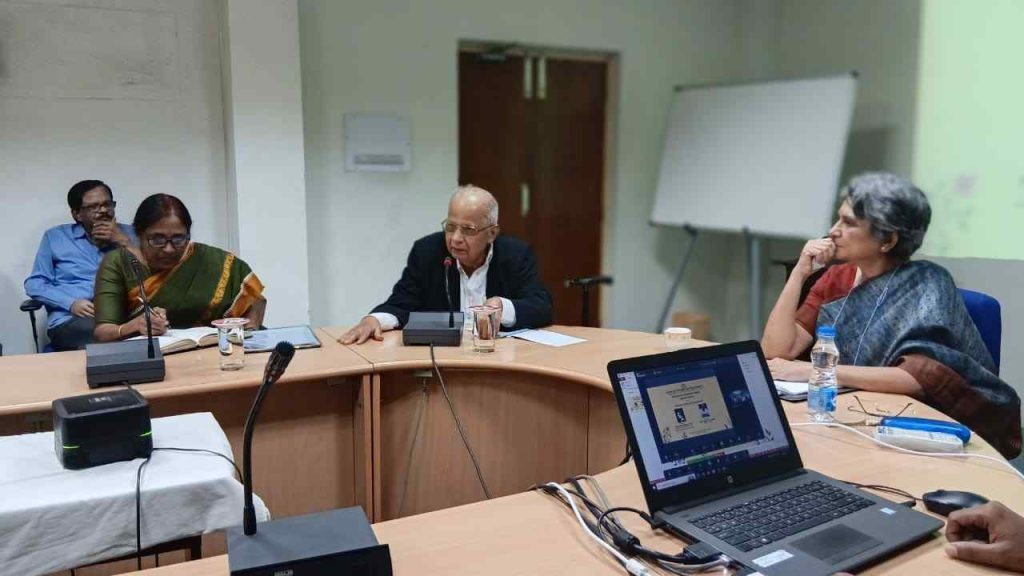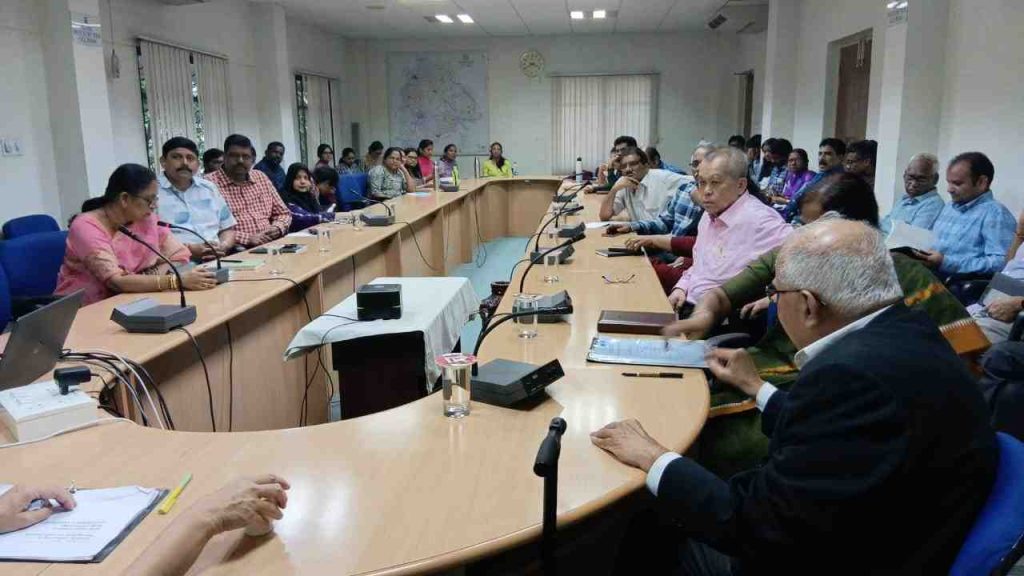CESS-DGS Special Lecture on “Why Are Indians Unemployed?”


Centre for Economic and Social Studies – Division for Graduate Studies
12 August 2025, Hyderabad
CESS–DGS hosted a Special Lecture on “Why Are Indians Unemployed?”, delivered by Prof. Dhanmanjiri Sathe, Professor, Department of Economics, Savitribai Phule Pune University, Pune. The session was chaired by Prof. Dilip M. Nachane, Chairman, CESS.
The gathering was welcomed by Dr. Alivelu Kasturi, Dean, DGS, who also provided a brief overview of the CESS–DGS Ph.D. Programme. Prof. E. Revathi, Director, CESS, contributed additional points to the theme, drawing attention to its institutional and policy dimensions. Prof. Dilip M. Nachane enriched the session by offering his analysis on key economic aspects of unemployment in India, adding further depth to the deliberations.
Prof. Dhanmanjiri Sathe began by highlighting the employment structure in India, noting that while formal sector employment constitutes less than 9% and unemployment is around 6%, the vast majority—approximately 85%—fall into the category of underemployment. She emphasized the difficulty of accurately measuring underemployment and unemployment, which itself reveals structural complexities.
The lecture examined the socio-economic and political dimensions of unemployment in India, with a particular focus on its caste-related aspects. She discussed how historical asset ownership—education for Brahmins, land for Kshatriyas, trade for Vaishyas, and cultivation or artisanal work for Shudras—has influenced economic opportunities. She noted that economic policy since the Planning era, reinforced in the liberalization period, has been biased towards capital- and skill-intensive industrialization, inadvertently perpetuating caste-based disparities.
Drawing on historical evidence, including the formulation of the Constitution, the First Five-Year Plan, and the Hindu Code Bill, as well as data from the Hazari Committee Report (1967), she analyzed how entrenched social groups have shaped policy outcomes. Despite economic liberalization in 1991, the anticipated shift towards labour-intensive industrialization did not occur, leaving a labour-abundant economy with persistently low employment absorption.
From a political perspective, she also noted that unemployment has rarely been a central electoral issue, with poverty and inflation receiving more attention. She observed that caste-based agitations for reservations—particularly among upper OBC groups—reflect how employment grievances manifest in India’s political discourse.
The lecture concluded by stressing the need for disaggregated data on formal sector employment by age, education, gender, location, and caste; policy reforms to address structural biases; and greater political pressure to make unemployment a priority issue. She underscored that access to education remains the most feasible equalizer in the Indian context, given its potential to reduce inequalities more readily than redistributing land or capital.
